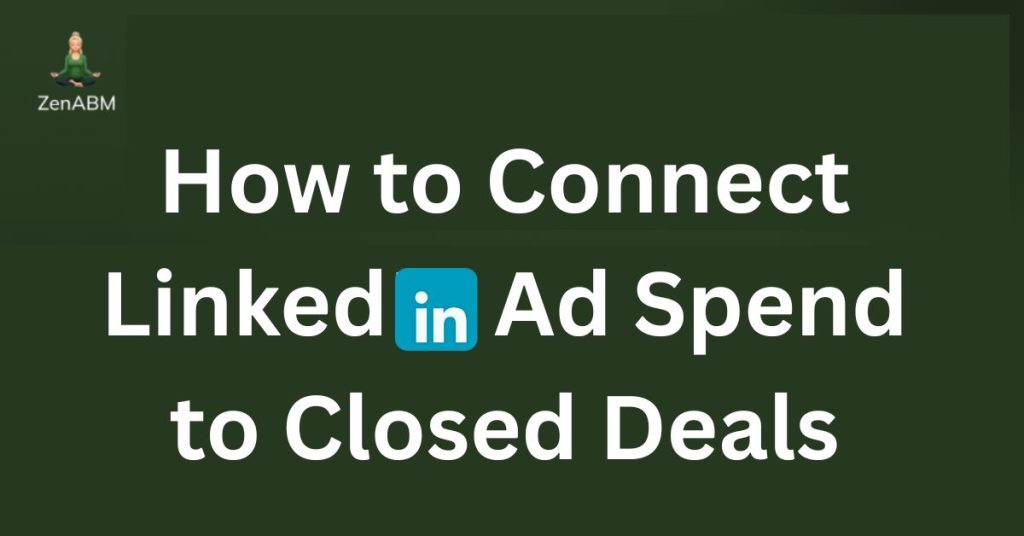LinkedIn is not a search engine. For advertising, it behaves more like a busy roadside billboard that your buying group sees all the time. If you truly want to learn how to connect LinkedIn ad spend to closed deals in ABM, meaning real influence on pipeline and ROI at the account level, you must look beyond clicks and simple form submissions.
The reliable way to do this is to monitor company-level engagement for every campaign and creative, down to impressions, not only clicks.
The catch is that most “standard” setups cannot capture view-through influence with precision, which hides the real assist that LinkedIn ads deliver.
In this repack, I will pinpoint where common methods fail ABM, then show how to repair measurement with ZenABM so you can finally see which campaigns move accounts forward and produce revenue.
How to connect LinkedIn ad spend to closed deals with ZenABM: quick summary
- Treat LinkedIn ads like a billboard. Track account exposure, not only clicks.
- ABM requires company-level view-through attribution by campaign and by creative.
- The LinkedIn Companies tab rolls results up at the account level view, not at individual campaign depth.
- IP deanonymization is shaky for ABM. Practical accuracy often sits near 40 percent.
- Display ecosystems and cookie graphs do not fit ABM. Cookies fade, identity trails lag, and bots inflate activity.
- Native CRM connections follow individuals and same-session clicks. Multi-user and cross-device journeys slip past.
- Required data shape: first-party API data at the company level for impressions, reactions, and clicks.
- Map exposure to open pipeline and closed deals. Attribute influence across every LinkedIn campaign, not just last touch.
- Sync company properties into HubSpot for lists, reporting, and automation.
- Score accounts on exposure and interaction, then route hot companies to BDRs automatically.
- Tag campaigns by topic so buyer intent clusters pop for focused outreach.
- Use ABM dashboards in ZenABM to track impressions, momentum, opportunity influence, and ROI.
- Stay compliant. API only, no scraping, no fingerprinting.
- All of this runs in ZenABM. Start with ZenABM for free or book a live demo.
Why the usual methods cannot prove LinkedIn’s ABM impact
First, the mindset. LinkedIn is primarily for brand shaping and category education, not for last-click conversions.
Click-through rates tend to be modest:
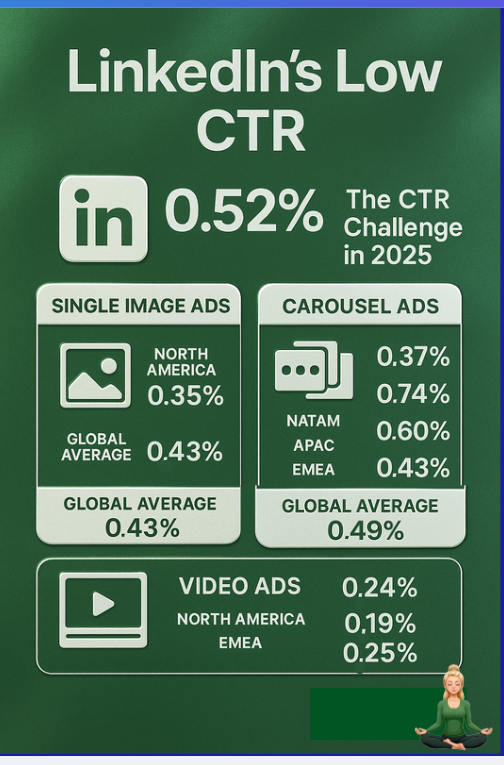
Unlike Google Search, your ICP is not hunting, they are scrolling. An executive sees your ad, does not click, later searches your brand or types your URL. Analytics then label it “Organic” or “Direct,” and LinkedIn’s real lift disappears.
The remedy: treat impressions and quiet interactions as primary signals. To assess LinkedIn ad effectiveness for ABM, capture who saw which messages and connect that exposure to account movement, even when nobody clicked.
That is where most stacks miss:
LinkedIn Campaign Manager
LinkedIn’s Company Engagement Report (now the Companies tab) reveals account-level interactions.
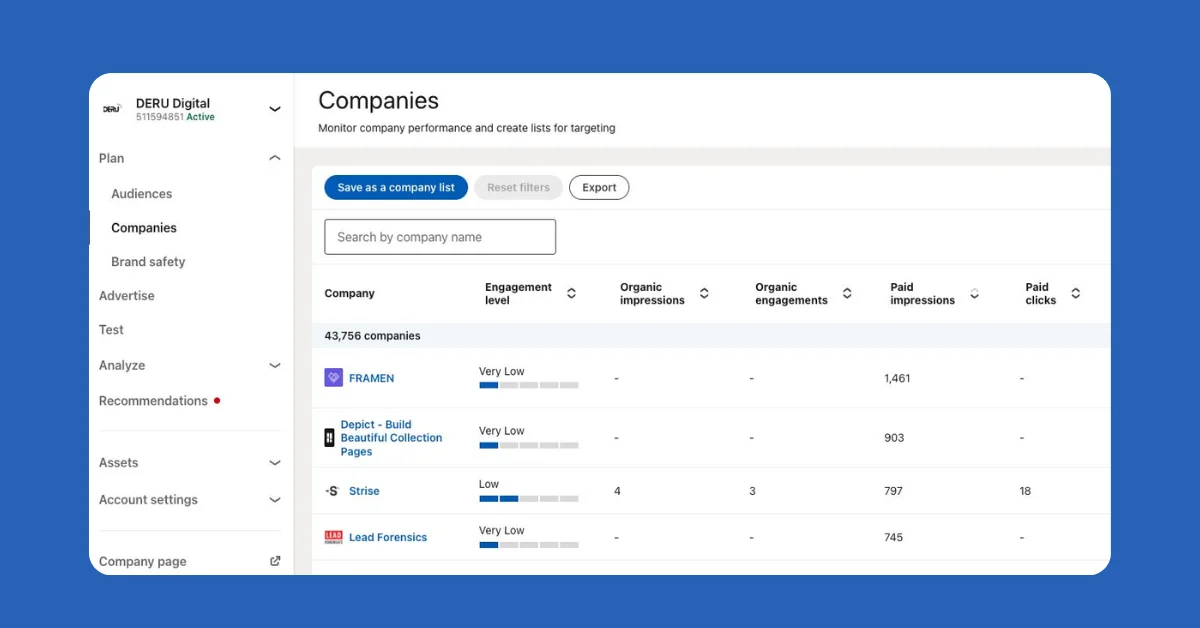
Useful, yet limited for ABM. The numbers are aggregated across the whole ad account. You cannot confidently answer, “Which campaign generated impressions and reactions at Acme,” or “Which creative nudged this buying team.” When multiple ABM motions run in parallel, this level of detail is essential for message testing, readiness scoring, and revenue attribution.
Website deanonymization tools
IP-based reveal tools claim to show which companies visited your site. Reality check: they only see visitors who actually arrived, which means people who clicked. Viewers who never clicked your LinkedIn ad remain invisible. Even for clickers, accuracy wobbles because of VPNs, shared networks, and dynamic IPs.
A Syft review reported typical accuracy around 40 percent, which is too thin for ABM-grade attribution.

A real example: Userpilot checked traffic from LinkedIn to their site using Clearbit, and the tool surfaced one company, their own.
For ABM measurement, that is not viable.
Display ad networks and behavioral stitching
Retargeting platforms such as AdRoll and Criteo infer company or intent through cookies and device graphs. Three problems for ABM:
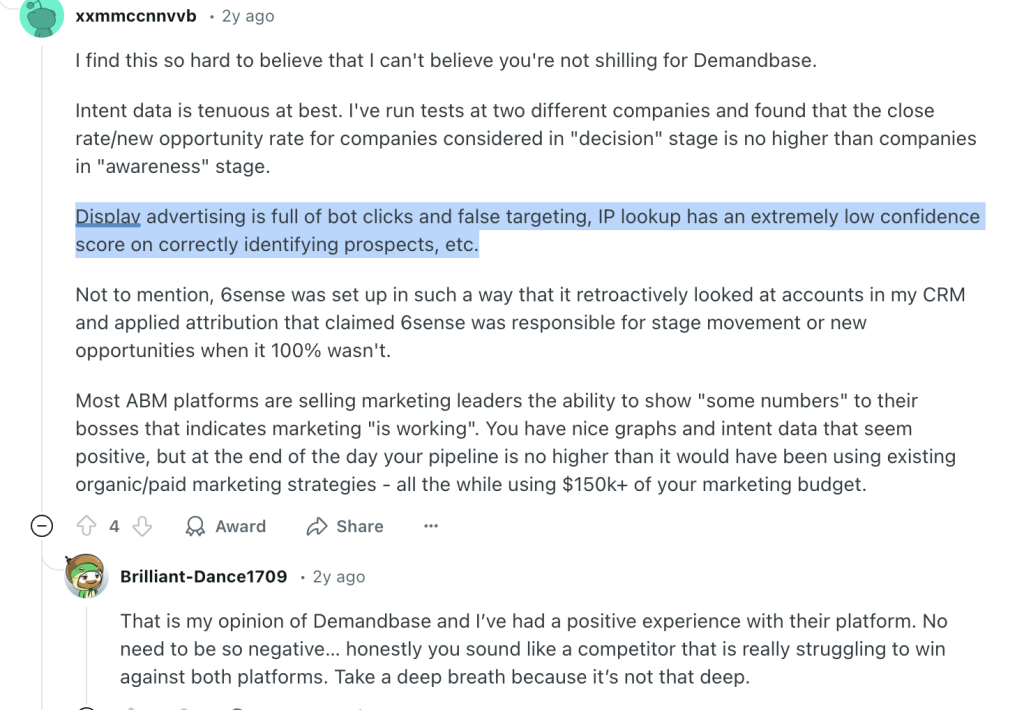
- Third-party cookies are going away: Chrome’s deprecation breaks cross-site tracking.
- Out-of-date identity: People change jobs, and data updates lag, so employer mapping drifts.
- Bot noise: Fake activity distorts impressions and clicks, which corrupts attribution.
LinkedIn Ads ⇄ CRM integrations
Native links, for example, HubSpot’s connector, sync forms and basic ad data. Great for operations, not enough for ABM impact:
- Built around individual contact attribution, not company-level exposure.
- Misses cross-session and cross-device patterns, such as a mobile view and a desktop conversion next week.
- Limited insight into which key accounts keep seeing and reacting to ads over time.
- No native way to map ad engagement to pipeline stages and open opportunities.
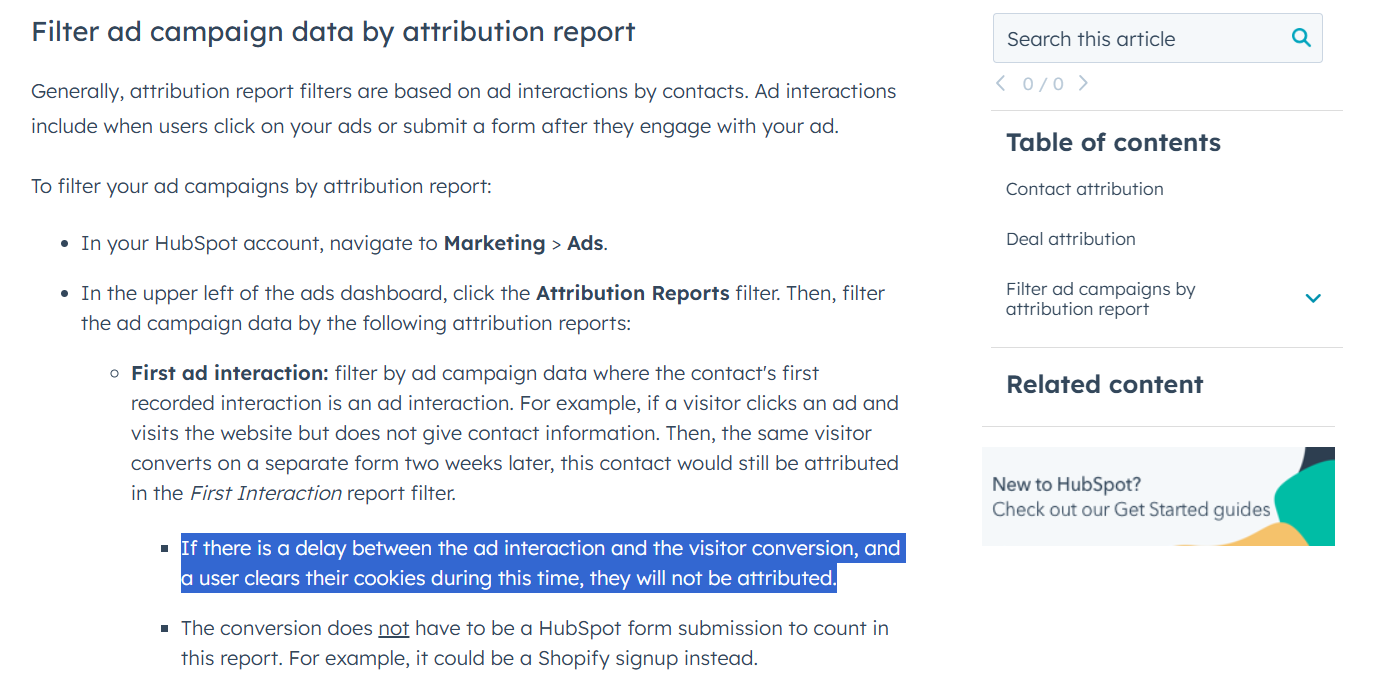
In B2B buying groups, one person views the ad and another submits the form days later. Last-click thinking and cookie limits break that link. For how to connect LinkedIn ad spend to closed deals in ABM, you need company-level view-through, not only click-through.
- CRM plus Insight Tag: records direct, same-session click to form, but misses impressions and delayed conversions.
- IP tools: narrow coverage, often near 40 percent accuracy, and only when a session is known.
- Campaign Manager’s Companies tab: some impression-by-company insight, but not by campaign or by creative, which blocks A/B testing and fair attribution.
How ZenABM connects LinkedIn ads to pipeline, accurately
To evaluate LinkedIn ads for ABM, you need first-party, campaign-level, company-level visibility across impressions, reactions, and clicks, measured per account, not only per person. ZenABM analytics delivers this using LinkedIn’s official APIs, with no cookies, no IP guesswork, and no scraping.
See every company that viewed or interacted, by campaign
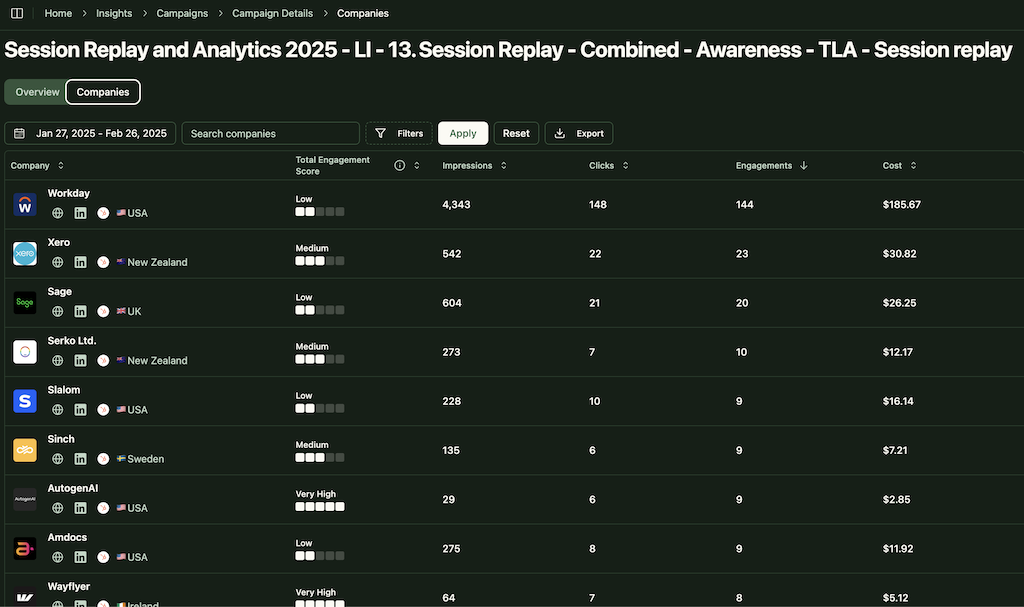
For each campaign, ZenABM surfaces account-level impressions, reactions, shares, and clicks, along with CRM context for live deals.
- Counts impressions even when nobody clicks or submits.
- Logs reactions, comments, and shares as meaningful engagement.
- Captures clicks without leaning on cookies.
- Credits view-through so non-clicking exposure still counts.
Example: a company never clicks, views your ads many times, then books a demo a month later. ZenABM links those exposures to the opportunity so the campaign earns its share of credit.
Fair multi-touch attribution across campaigns
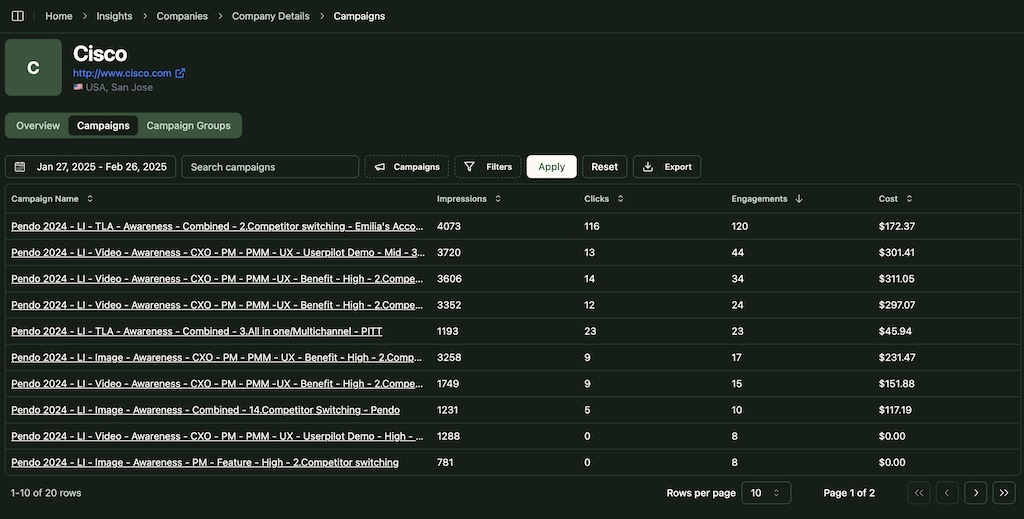
Top-of-funnel awareness, product education, and conversion offers all get recognized. No more over-crediting the final ad that collected the form.
Auto-sync engagement to HubSpot and Salesforce at the company level
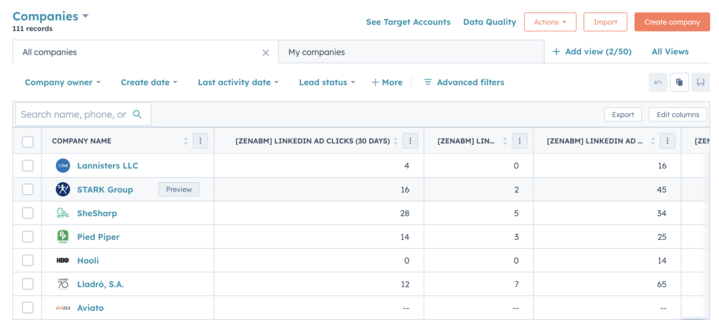
No CSV juggling. Properties such as “Impressions, Last 7 Days, Campaign X” and “Clicks, Last 7 Days, Campaign X” live on the Company record and power lists, reports, and workflows.
ABM stage tracking with thresholds you control
ZenABM monitors the ABM stage of each account using CRM data and engagement levels, and you control the thresholds:
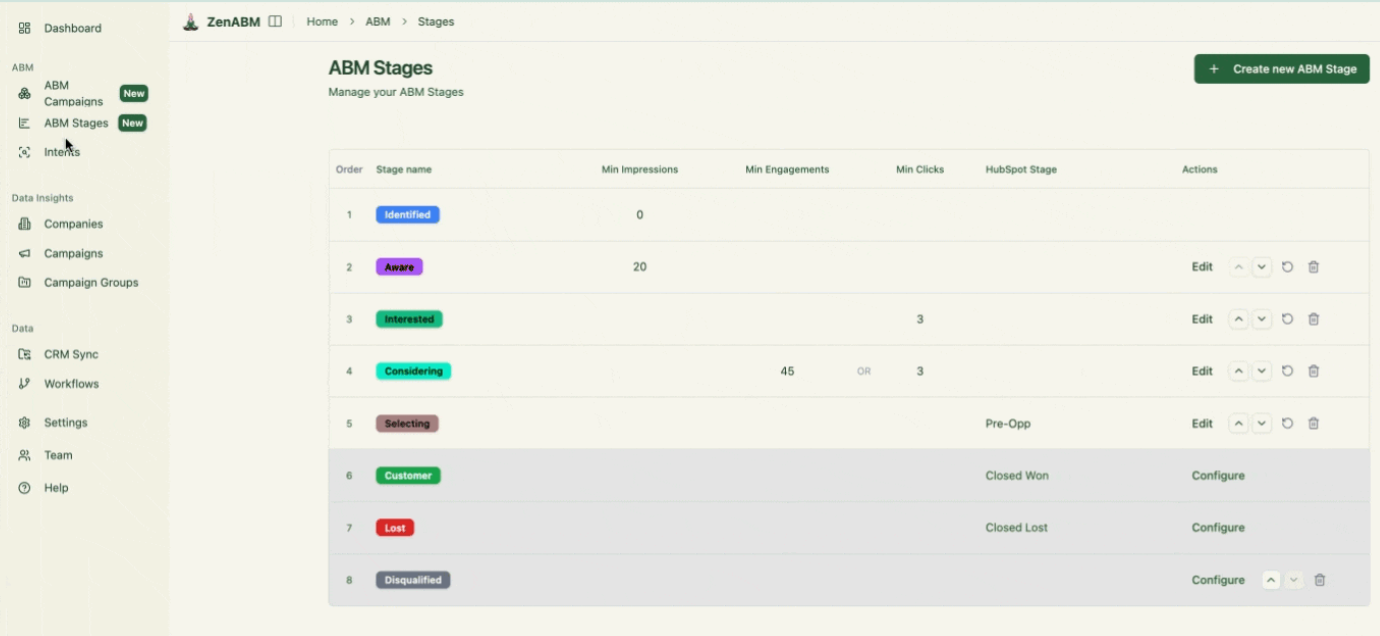
Scoring and BDR routing based on real engagement

Set thresholds on cumulative impressions, reactions, or clicks. When a company heats up, auto-assign to the right BDR, launch sequences, or trigger a one to one play.

Intent by topic, tied back to campaigns
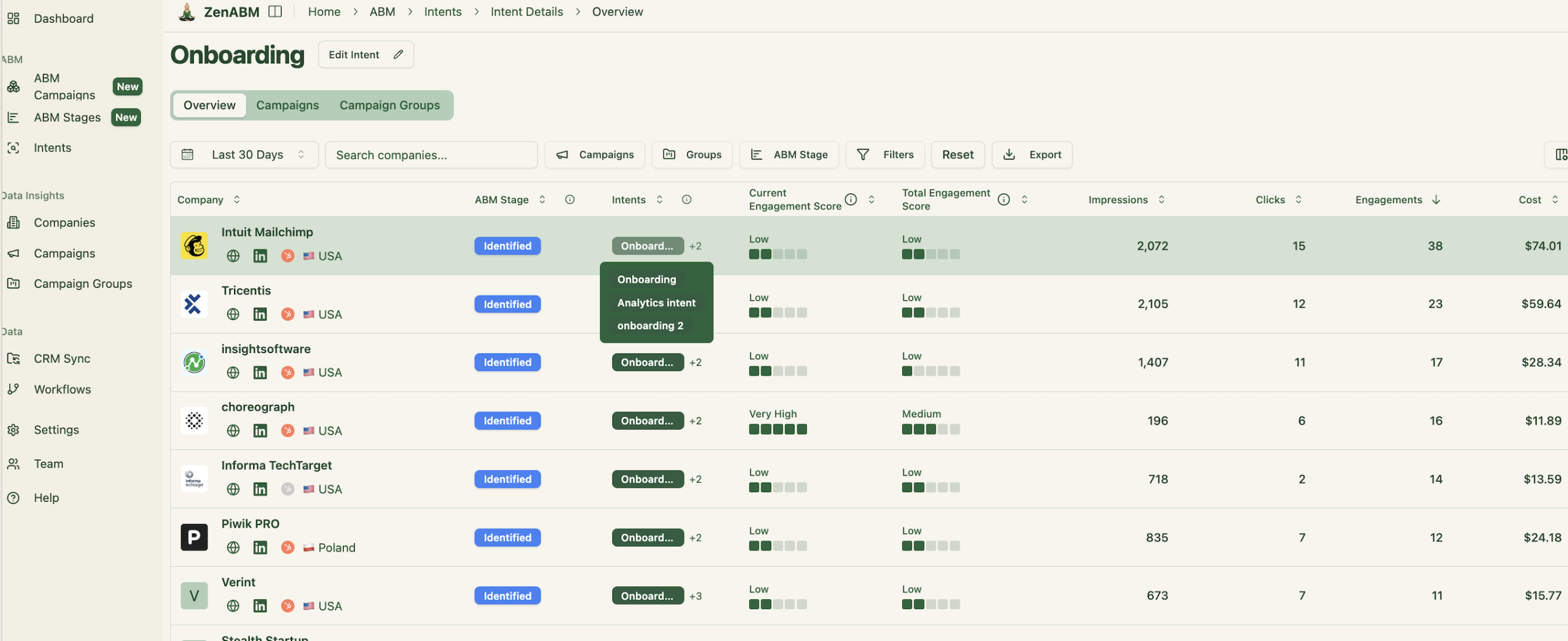
Tag campaigns by use case, feature, or vertical. ZenABM groups accounts by the topics they engage with, so reps know which story to open with.
Link ad exposure to pipeline and revenue from closed deals

See which campaigns influenced opportunities and revenue, beyond last click. This is the attribution model ABM needs.
ABM-ready dashboards, out of the box
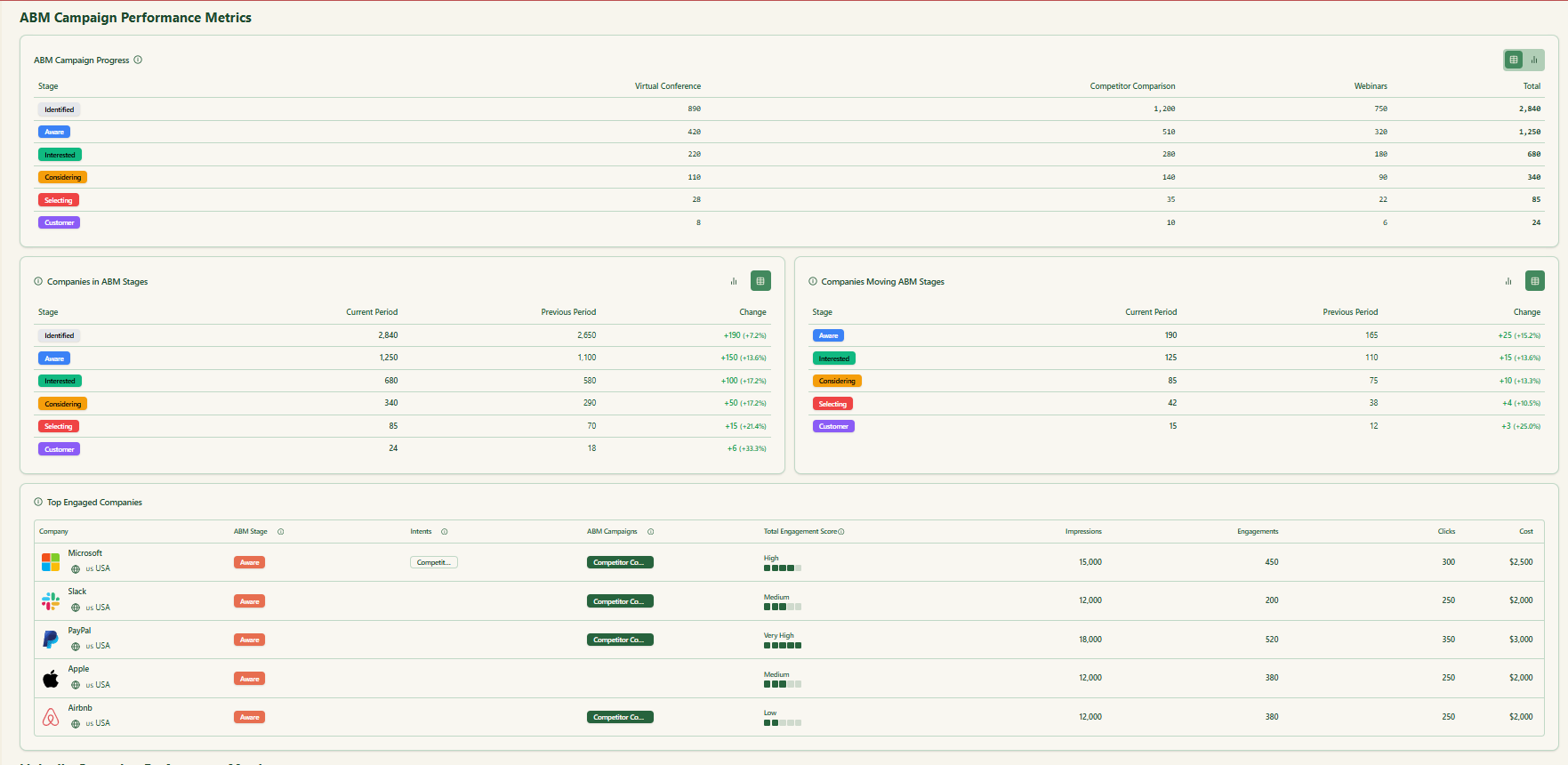

Prebuilt views spotlight what matters most, including account impressions, engagement momentum, opportunity influence, and ROI, cut by campaign and by account.
First-party, compliant data, no scraping
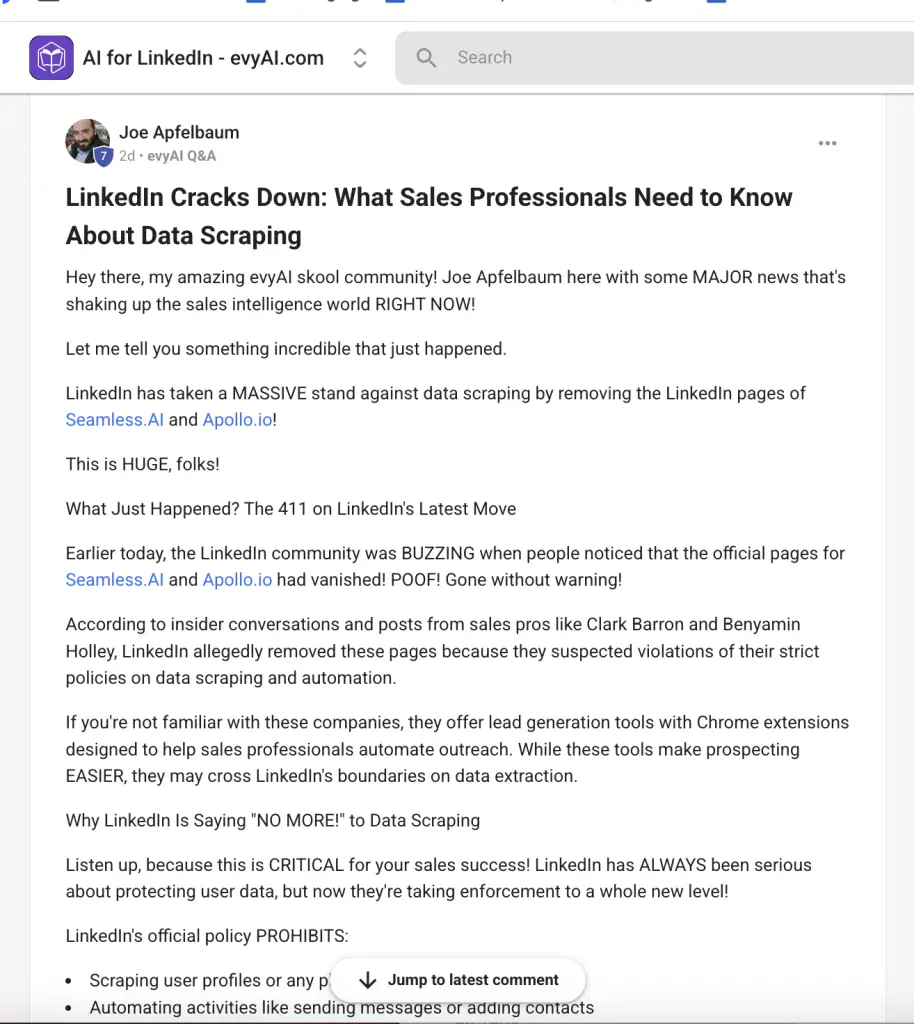
ZenABM relies on LinkedIn’s approved APIs. No scraping, no fingerprinting. Clean, compliant, first-party telemetry.
Your move
Clicks and forms show only a slice of reality. In longer, multi-stakeholder sales cycles, company-level view-through is where LinkedIn’s real value appears. When you track who saw which campaigns, how frequently, and how that exposure nudged pipeline and closed deals, you stop guessing and start improving.
If you are serious about how to connect LinkedIn ad spend to closed deals, adopt first-party, company-level analytics that capture impressions, reactions, and cross-campaign influence, then sync everything to your CRM for scoring, routing, and revenue reporting. That is exactly what ZenABM provides. Reveal the view-through story you have been missing and double down on the campaigns that actually move accounts.

